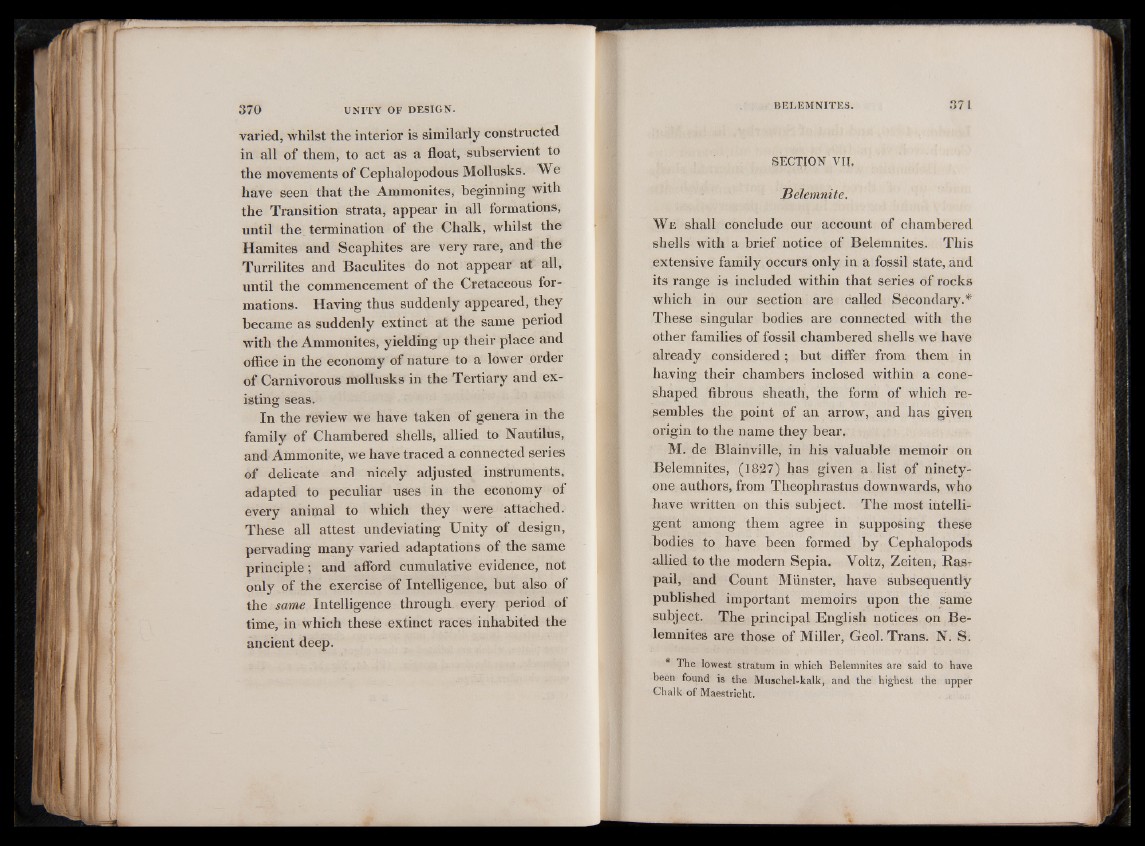
varied, whilst the interior is similarly constructed
in all of them, to act as a float, subservient to
the movements of Cephalopodous Mollusks. We
have seen that the Ammonites, beginning with
the Transition strata, appear in all formations,
until the termination of the Chalk, whilst the
Hamites and Scaphites are very rare, and the
Turrilites and Baculites do not appear at all,
until the commencement of the Cretaceous formations.
Having thus suddenly appeared, they
became as suddenly extinct at the same period
with the Ammonites, yielding up their place and
office in the economy of nature to a lower order
of Carnivorous mollusks in the Tertiary and existing
seas.
In the review we have taken of genera in the
family of Chambered shells, allied to Nautilus,
and Ammonite, we have traced a connected series
of delicate and nicely adjusted instruments,
adapted to peculiar uses in the economy of
every animal to which they were attached.
These all attest undeviating Unity of design,
pervading many varied adaptations of the same
principle; and afford cumulative evidence, not
only of the exercise of Intelligence, but also of
the same Intelligence through every period of
time, in which these extinct races inhabited the
ancient deep.
SECTION VII.
Belemnite,
W e shall conclude our account of chambered
shells with a brief notice of Belemnites. This
extensive family occurs only in a fossil state, and
its range is included within that series of rocks
which in our section are called Secondary.*
These singular bodies are connected with the
other families of fossil chambered shells we have
already considered; but differ from them in
having their chambers inclosed within a cone-
shaped fibrous sheath, the form of which resembles
the point of an arrow, and has given
origin to the name they bear,
M. de Blainville, in his valuable memoir on
Belemnites, (1827) has given a. list of ninety-
one authors, from Theophrastus downwards, who
have written on this subject. The most intelligent
among them agree in supposing these
bodies to have been formed by Cephalopods
allied to the modern Sepia. Yoltz, Zeiten, Ras-
pail, and Count Munster, have subsequently
published important memoirs upon the same
subject. The principal English notices on Belemnites
are those of Miller, Geol. Trans. N . S.
* The lowest stratum in which Belemnites are said to have
been found is the Muschel-kalk, and the highest the upper
Chalk of Maestrieht.